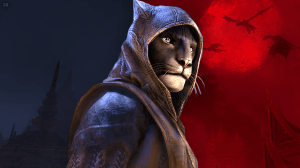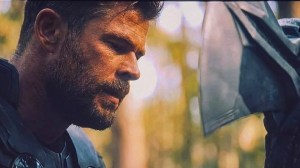The origins of such iconic characters like Batman, Superman and Spider-Man are stories that most comic book fans know by heart, but that doesn’t mean these classic tales are never in need of some updating. Those currently watching Fox’s Gotham are being treated to a new spin on the murder of Bruce Wayne’s parents (setting the stage for him becoming Batman), along with the rise of many of his most famous villains, while Marvel recently reimagined the earliest days of Spidey’s career with it’s “Learning to Crawl” Amazing Spider-Man miniseries.
Videos by ComicBook.com
With those events in mind, here are 10 of the very best superhero origin retellings:

10. The Power of Shazam
Jerry Ordway’s 1994 graphic novel reintroduced Captain Marvel, aka Shazam, for an entire new generation of readers, after an earlier attempt by Roy Thomas and Tom Mandrake in 1987 seemingly failed to capture much interest from readers. The graphic novel led directly to a Power of Shazam ongoing, which introduced a number of Marvel Family characters into DC’s continuity, while Ordway’s fresh take on Shazam’s remained the origin story of choice for more than a decade.
Ordway does a terrific job linking the young Billy Baston with the corrupt archaeologist, Theo Adam. Both go on to become Shazam and Black Adam respectively. In this iteration of the story, Adam murders Baston’s parents and kidnaps Billy’s sister, Mary, while on an expedition in Egypt. Years later, in an attempt to redeem Black Adam, readers would learn that it was Theo Adams who was inherently evil and Black Adam was not culpable for his alter-ego’s actions.

9. Captain America: Man Out of Time
Mark Waid’s return to the world of Captain America in 2010-11 yielded this five-part origin retelling that has gone on to be a clear inspiration for the Marvel Cinematic Universe’s iteration of the Red, White and Blue Avenger. Ever since the character’s reintroduction into the comic book world with Avengers #4 in 1964, Cap has personified the “man out of time” trope. But what Waid and penciller Jorge Molina demonstrate with the Man Out of Time series is that there’s a big difference between a World War II hero waking up in the 1960s and waking up in the 21st century.
Waid’s Captain America is thawed out into a universe where most of his fellow soldiers from WWII have passed on and his new potential mates – the modern day version of the Avengers – are edgier, more cynical, and heavily dependent on advanced technology. As a result, Man Out of Time is as much of an origin retelling as it is a story about a man coming to grips with the fact that he needs to leave his past behind and make a new life for himself in a world he’s not fully comfortable with.
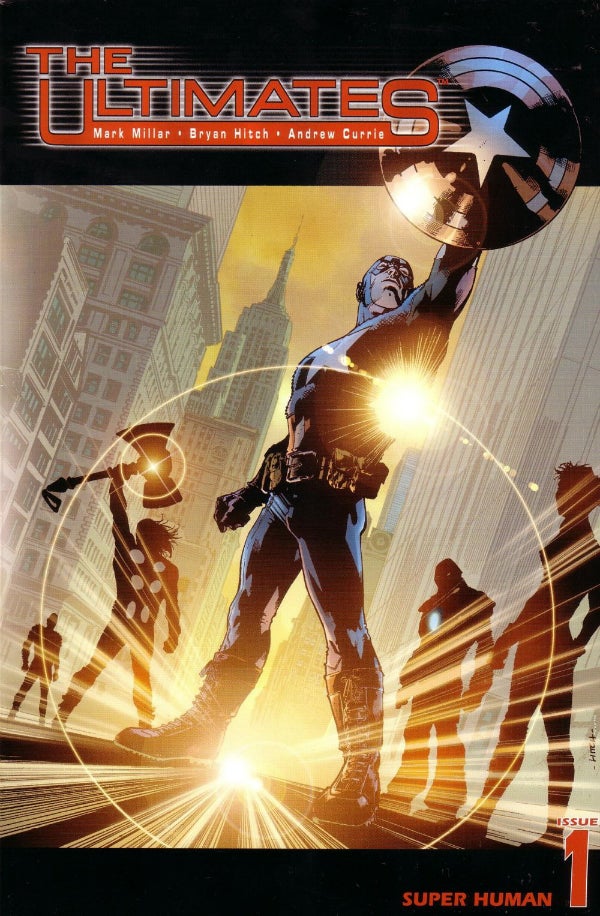
8. The Ultimates 1
Mark Millar and Bryan Hitch’s modern day take on the Ultimate Universe’s iteration of Marvel’s greatest superteam, the Avengers (dubbed the Ultimates, ‘natch), is one of the most divisive comics from the past 20 years. The bulk of the team – which includes Marvel stalwarts such as Captain America, Thor, Iron Man, Hulk, Hank Pym and Janet Van Dyne – is characterized as being brash, egotistical, arrogant and generally unlikeable. But even if you cringed when Bruce Banner rampaged through New York City because he was dumped by Betty Ross for Freddie Prinze Jr., or when Captain America got just a wee bit too passionate about his patriotism (at the expense of France), it cannot be denied how influential The Ultimates ended up being for the Marvel Universe.
Because of its grandeur and highly stylized qualities, many critics and readers cite the comic as being a source of inspiration for the Marvel Cinematic Universe, unquestionably one of the most important film franchises in Hollywood today. In one scene in the comic, the script even teases the premise of a film based on the team when the characters start speculating who would play who on the big screen (Fury famously predicts Samuel L. Jackson).

7. Batman: “Zero Year”
Scott Snyder and Greg Capullo reimagine the birth of Batman for the “New 52” generation, and manage to craft a story that is both pays homage to the creators who preceded them and blazes a new trail in terms of Bruce Wayne’s motivations to be the Dark Knight.
This yearlong storyline, which just wrapped in July with the publication Batman #33, offers a grander and more colorful take on the Batman mythos. Rather than start Batman off against Gotham’s seedy underbelly, as has been the case in previous origin stories, Snyder and Capullo raise the stakes to 11 from the get-go; first pitting the Caped Crusader against the dangerous Red Hood gang before he needs to outwit and outfox the Riddler with the fates of millions of Gothamites hanging in the balance. Despite the action-heavy fast-pace, “Zero Year” is also chock full of quieter, introspective moments where Bruce reflects on the trauma of having his parents murdered and how that directly ties into his desire to risk his life while dressing up in a cape and a cowl.

6. Iron Man: “Extremis”
Similar to The Ultimates, Marvel Studios has mined a significant amount of content for its Iron Man trilogy from this Warren Ellis/Adi Granov storyline. For the first six issues of the fourth volume of Iron Man, Ellis and Granov completely redefine and modernize the status quo for Tony Stark/Iron Man, introducing a character that is a weapons designer whose inventions are being used by the U.S. military in Afghanistan during the second Persian Gulf War. While on a tour, Stark is attacked by someone using his own weapons, and he is badly injured and captured by Afghan terrorists. While in captivity, he designs the first iteration of his Iron Man armor.
Ellis’s take would of course go on to serve as Iron Man’s origin story in 2008’s Iron Man film – the launching point for the Marvel Cinematic Universe. Meanwhile, “Extremis” is an insightful and needed update on Tony Stark and Iron Man. While the original Stan Lee/Larry Lieber/Don Heck origin story in Tales of Suspense #39 is often credited as being one of Marvel’s best stories, reimagining Stark’s work as a weapons dealer in the current geopolitical climate is much easier for today’s readers to connect to and identity with.

5. Green Lantern: Secret Origin
Geoff Johns and Ivan Reis collaborated for this six-issue arc that not only recounted Hal Jordan’s origins as the Green Lantern, but also functioned as a prelude to DC’s Blackest Night event. Throughout the story, Johns demonstrates why his run with Hal and the Green Lantern universe is so celebrated by fans. He introduces Jordan as a brash youth who is unable to move on from the death of his father in a plane crash. And while the character later matures as he is bestowed a power ring and becomes a member of the Green Lantern Corps., Jordan maintains that edge, daring to question the authority of the Guardians (a character flaw that would later come back to haunt Jordan in terms of Green Lantern continuity).
The arc also does a fantastic job of fleshing out Sinestro, who is initially introduced as an ally and pseudo-father figure of Jordan’s, though seeds are planted for his inevitable heel turn.

4. Daredevil: Man Without Fear
After his two character-defining runs on Daredevil in the late 1970s and mid-1980s, Frank Miller, alongside John Romita Jr. and Al Williamson received an opportunity to redefine Matt Murdock/Daredevil’s origins as part of this oft-celebrated five-part miniseries. Miller takes the basic skeleton of the original Stan Lee/Bill Everett story from 1964 (young man blinded after saving someone from an oncoming car, develops heightened senses) and then fleshes it out with a whole new Daredevil tale. To accomplish this, Miller borrows heavily from the storylines he first created during his initial writer/artist run on Daredevil. As a result, characters that Miller either created or reestablished as part of the Daredevil universe in the 1970s, such as the mystical Stick, the femme fatale Elektra, and the dangerous mob boss Wilson “Kingpin” Fisk, all were integrated in Man Without Fear.
When it comes time for the Daredevil Netflix series to premiere next year, it will be interesting to see how much of the first few episodes will be mined from Man Without Fear, as most critics and fans consider it the accepted take on the character and his status quo.

3. Ultimate Spider-Man: “Power and Responsibility”
While Brian Michael Bendis’s “decompressed” storytelling approach has occasionally been criticized by some readers, he used the technique masterfully for the opening arc of Ultimate Spider-Man – taking one of the greatest origin stories of all time and arguably enhancing it by giving it significantly more room to breathe.
While it’s hard to find fault with what Stan Lee and Steve Ditko accomplished in Spider-Man’s first appearance and origin story in Amazing Fantasy #15 in 1962, Bendis took advantage of having six full issues to reimagine a story that originally was done in 11 pages. The biggest narrative change was how Bendis linked the radioactive spider that bit Peter Parker with the villainous industrialist Norman Osborn (who later becomes the Green Goblin). But what makes “Power and Responsibility” such a wonderful origin retelling is how Bendis and artist Mark Bagley (who performed the greatest work in his career on this title) built and developed the Spider-Man universe’s supporting cast. Uncle Ben was essentially a plot device in the Lee/Ditko origin – a character that was introduced explicitly to be killed off and teach the main hero a lesson. But Bendis’s script forces you to fall in love with the character – making his inevitable death at the hands of a burglar that much more devastating.
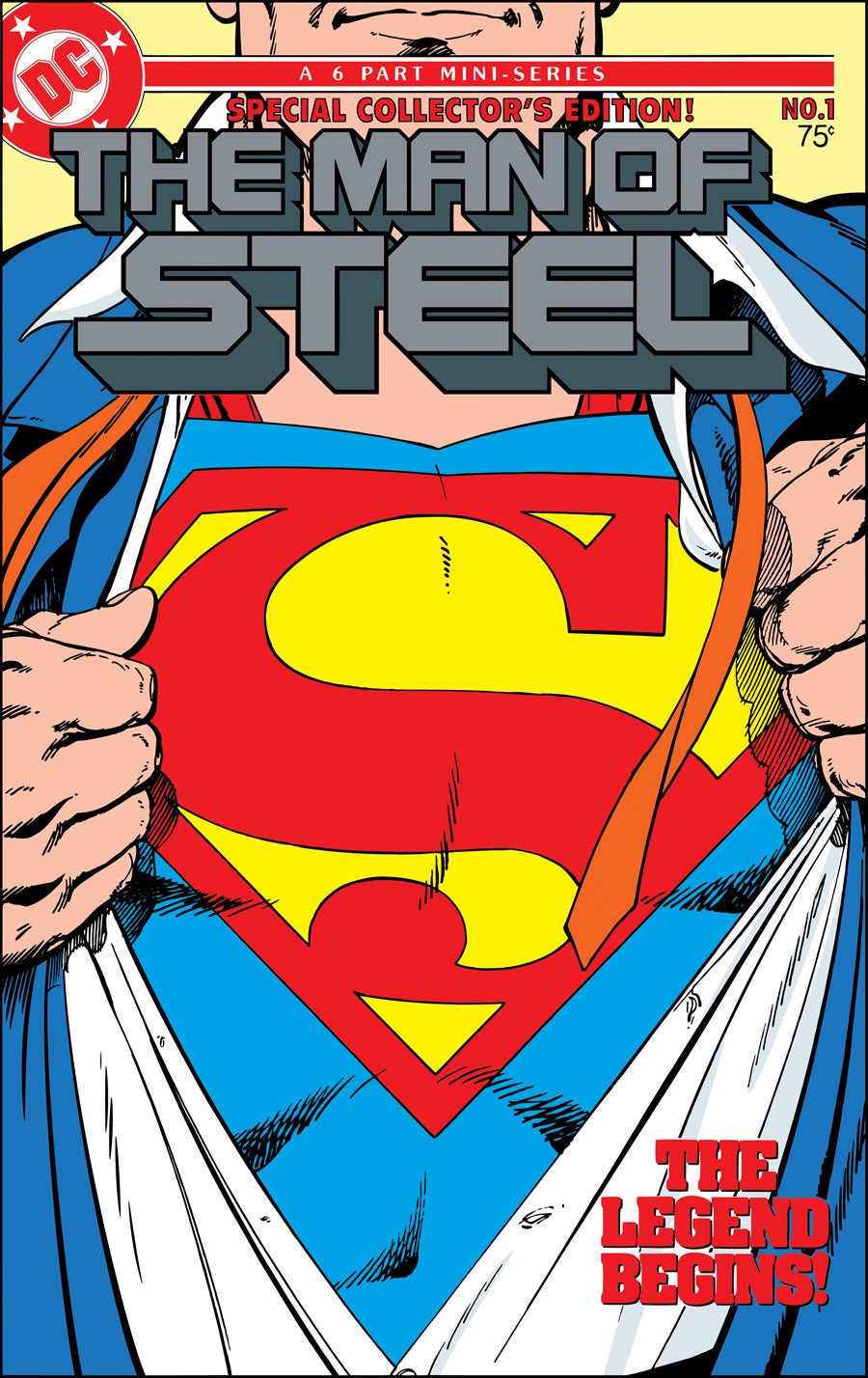
2. Superman: The Man of Steel
After an iconic career at Marvel that included his legendary run as an artist on X-Men and his writer/artist stint on Fantastic Four, John Byrne left the “House of Ideas” to reimagine Superman in the post-Crisis on the Infinite Earths universe. Byrne scripted and illustrated this six-part limited series, which establishes Kal-El, aka Superman, as the sole survivor from the planet Krypton, his early days growing up on a farm in Smallville, and his eventual ascent into the defender of Metropolis (and Earth) as the “Man of Steel.” Byrne’s story also reimagines the very first meeting between Batman and Superman which, on the heels of Frank Millers The Dark Knight Returns, depicts the duo as being more adversarial than buddy-buddy, his love interest Lois Lane and the diabolical Lex Luthor. Following this miniseries, Byrne went on to create a rebooted Superman ongoing in January, 1987.
The Man of Steel was considered the definitive take on Superman’s origins until about 2003 when Superman: Birthright was published and added new elements to Byrne’s story. DC would later reveal that both The Man of Steel and Birthright were jointly considered canon.
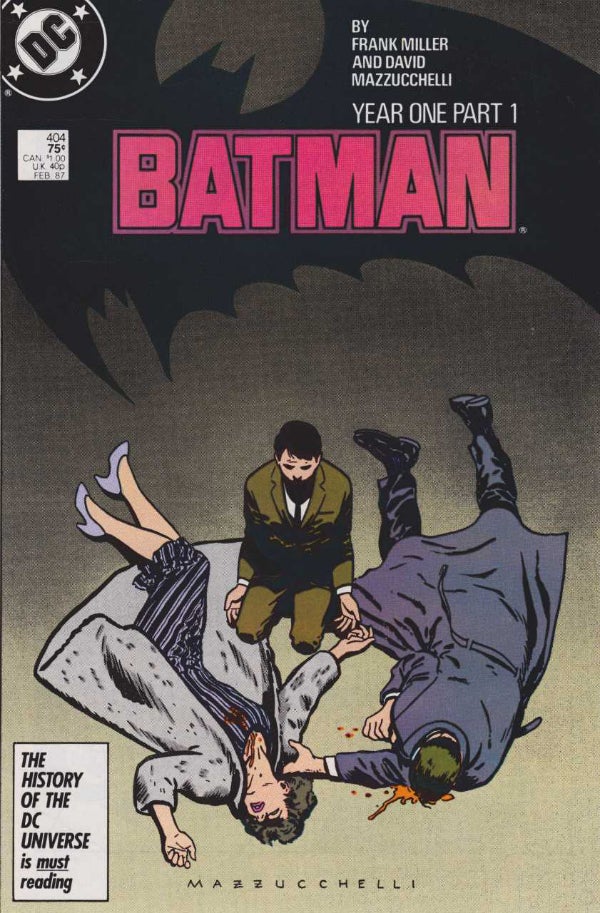
1. Batman: “Year One”
Nearly 30 years after it was first published, Frank Miller and David Mazzuccchelli’s “Year One” Batman storyline is still considered the standard bearer for superhero origin retellings. As evidenced by the opening scene of Fox’s Gotham television series, along with Christopher Nolan’s acclaimed Batman Begins cinematic reboot, “Year One” is still heavily referenced to this day. In fact, even the arc’s title, “Year One,” has proven to be extraordinarily influential, as DC has produced a number of origin reimaginings (i.e. Robin, Batgirl, Green Arrow, etc.) under the “Year One” banner.
Historical significance aside, “Year One” is also considered by many fans and critics to be the greatest Batman story ever published, and others would also declare it the best piece of writing in Miller’s storied comic book career. So many of “Year One’s” visual and narrative sequences and themes have become a commonly accepted part of the Batman mythos – the character’s darkness, Martha Wayne’s pearls, Batman’s relationship with Gotham detective Jim Gordon, the Caped Crusader’s feud with Batman’s underworld and Carmine Falcone – that it’s sometimes hard to remember that this story *only* came out in 1987.
As this list demonstrates, there’s been a number of great superhero origin retellings, and even Batman got an awesome one with “Zero Year” earlier this year, but there is only one “Year One” and nothing is likely to ever surpass in terms of this style of story.





